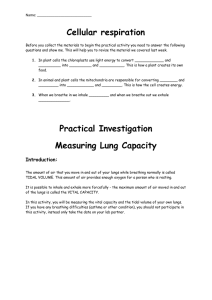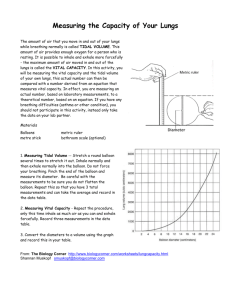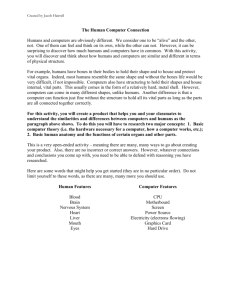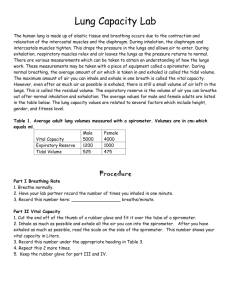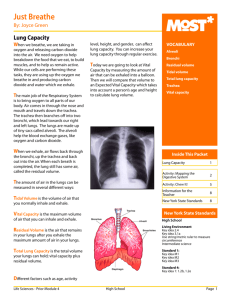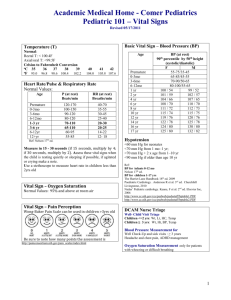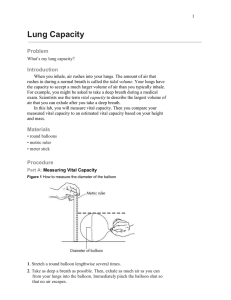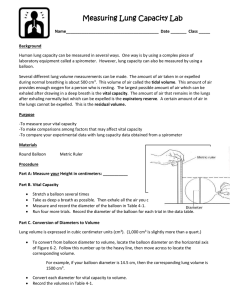Vital Capacity- It is possible to inhale and exhale more forcefully
advertisement
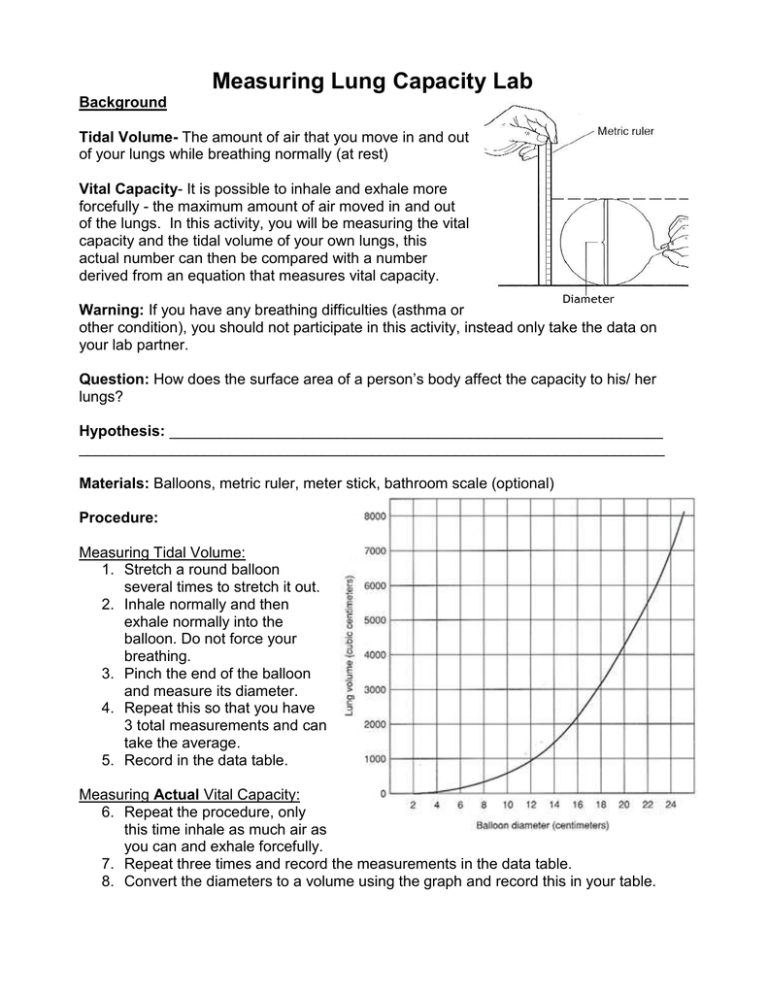
Measuring Lung Capacity Lab Background Tidal Volume- The amount of air that you move in and out of your lungs while breathing normally (at rest) Vital Capacity- It is possible to inhale and exhale more forcefully - the maximum amount of air moved in and out of the lungs. In this activity, you will be measuring the vital capacity and the tidal volume of your own lungs, this actual number can then be compared with a number derived from an equation that measures vital capacity. Warning: If you have any breathing difficulties (asthma or other condition), you should not participate in this activity, instead only take the data on your lab partner. Question: How does the surface area of a person’s body affect the capacity to his/ her lungs? Hypothesis: ___________________________________________________________ ______________________________________________________________________ Materials: Balloons, metric ruler, meter stick, bathroom scale (optional) Procedure: Measuring Tidal Volume: 1. Stretch a round balloon several times to stretch it out. 2. Inhale normally and then exhale normally into the balloon. Do not force your breathing. 3. Pinch the end of the balloon and measure its diameter. 4. Repeat this so that you have 3 total measurements and can take the average. 5. Record in the data table. Measuring Actual Vital Capacity: 6. Repeat the procedure, only this time inhale as much air as you can and exhale forcefully. 7. Repeat three times and record the measurements in the data table. 8. Convert the diameters to a volume using the graph and record this in your table. Calculating Estimated Vital Capacity: 9. Measure your height with a meter stick. Convert inches to cm. (1 inch = 2.54 cm) 10. Measure your weight using a scale. Convert lbs to kg. (1 lb = 0.454 kg) 11. Calculate your surface area, using this equation: SA (m2) = ([Height (cm) x Weight (kg) ] / 3600 ) 1/2 12. Calculate your estimated vital capacity, using the different equations: Males: SA x 2500 or Females: SA x 2000 Data Table: Tidal Volume Balloon Diameter (cm) Trial 1 Vital Capacity Volume Balloon (cm3) Diameter (from graph) (cm) Volume (cm3) (from graph) Estimated Vital Capacity Height (cm) Mass (kg) 2 Surface Area (m2) 3 Vital Capacity (cm3) Average Analysis Questions: (please answer the questions on a separate sheet of paper in your notebook) 1. Compare your data to other members of the class. How can you account for differences, specifically in reference to different genders? 2. How does your measured vital capacity compare to the vital capacity you estimated using the formula? Which do you think is more accurate and why? 3. How might an athlete's vital capacity compare to a non-athlete? Explain your reasoning. 4. How might vital capacity be important to a musician? 5. Compare your lung capacity to that of another organism. Give an example how environment plays a role in the lung capacity of an organism. 6. Give an example of an organism that has adapted to use more of their lung capacity. How are these organisms physiologically/ structurally able to do this? (What is different about them?)
